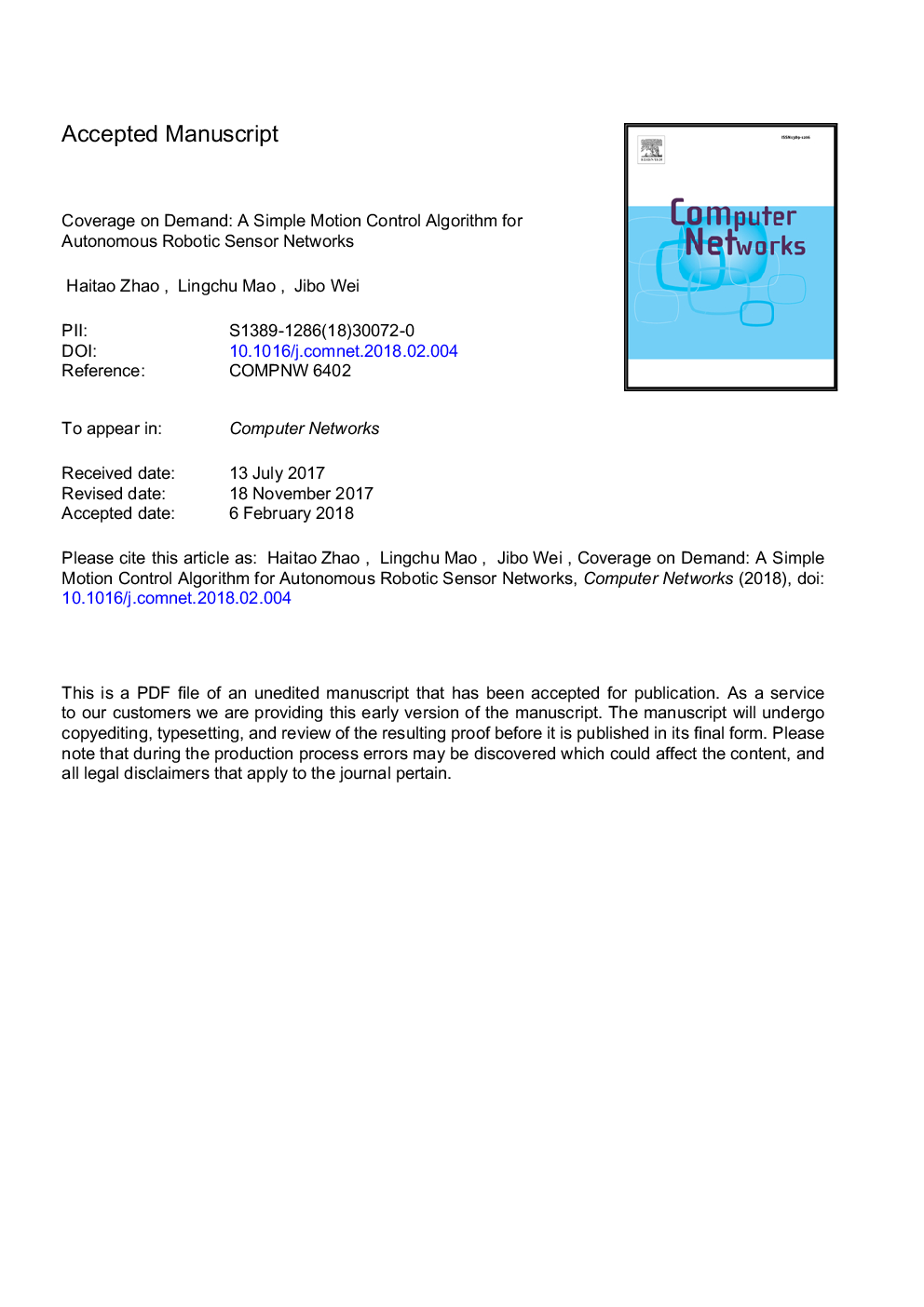ترجمه فارسی عنوان مقاله
پوشش تقاضا: یک الگوریتم کنترل حرکت ساده برای شبکه های سنسور روباتیک مستقل
عنوان انگلیسی
Coverage on demand: A simple motion control algorithm for autonomous robotic sensor networks
| کد مقاله | سال انتشار | تعداد صفحات مقاله انگلیسی |
|---|---|---|
| 146980 | 2018 | 24 صفحه PDF |
منبع

Publisher : Elsevier - Science Direct (الزویر - ساینس دایرکت)
Journal : Computer Networks, Volume 135, 22 April 2018, Pages 190-200
ترجمه کلمات کلیدی
شبکه های حسگر روباتیک، کنترل حرکت، الگوریتم مستقل، پوشش در تقاضا،
کلمات کلیدی انگلیسی
Robotic sensor networks; Motion control; Autonomous algorithm; Coverage on demand;

